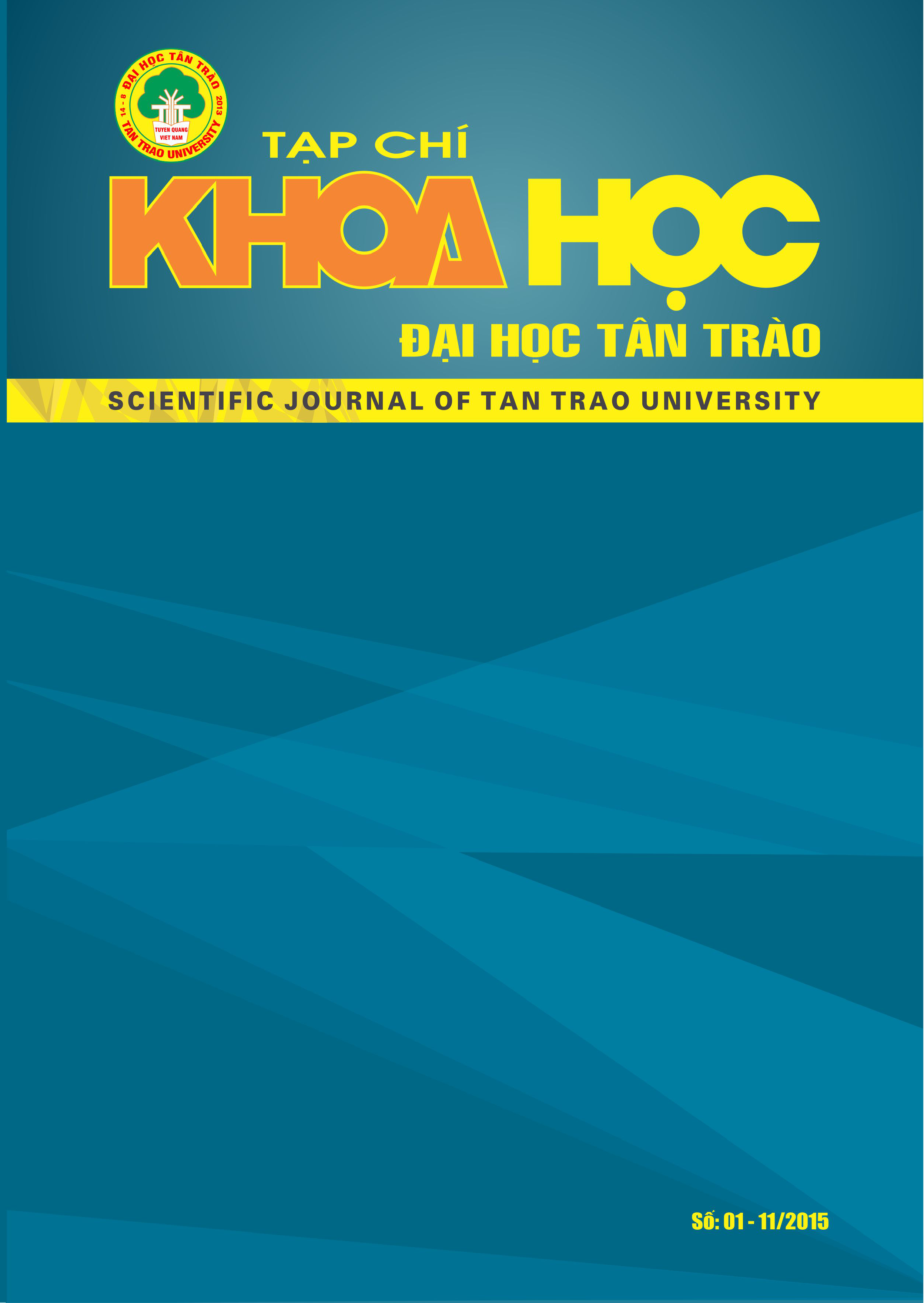Some investtigative and scientific research reasults on medicinal plant resources of Cao Lan ethnic in the Na Hang nature reserve, Tuyen Quang province
DOI:
https://doi.org/10.51453/2354-1431/2015/57Keywords:
Medicinal plant, Red Data Book, Red List of Medicinal plants, Cao Lan, Na Hang, Tuyen Quang.Abstract
Na Hang Natural Reserve is one of areas where has diverse and rich natural resource of traditional medicine. There are 275 kinds of medicinal plants and belong to 4 branches, 96 offshoots, and 204 limbs of vessel plant which has been written in field investigations. In those medicinal plants, there are 204 species belong to 3 branches, 85 offshoots, 168 limbs of vessel plant which are currently used by Cao Lan ethnic group, and there are also 5 species of those are listed in Red Book Vietnam and in Red Booklist of Medicinal Plants Vietnam. In 85 offshoots, there are11 offshoots which have the most number of species, these are: Rubiaceae, Euphorbiaceae, Zingberaceae, Araceae, Vitaceae, Acanthaceae, Verbenaceae, Myrsinaceae, Moraceae, Menispermaceae và Convallariaceae. Four popular plants of medicinal plant are Than thao plant (41,63%), bush (22,01%), wooden plant (16,75%), and mountain - climb plant (17,70%). Parts are most used including trunks, leaves, roots. Natural resource of traditional medicine in Na Hang Natural Reserve has important economic value and is a potential to develop new medicine and other natural products.
Downloads
References
1. Nguyễn Tiến Bân (1997), Cẩm nang tra cứu và nhận biết các họ thực vật hạt kín ở Việt Nam, Nxb Nông nghiệp. Hà Nội.
2. Bộ Khoa học & Công nghệ, Viện Khoa học và Công nghệ Việt Nam (2007), Sách Đỏ Việt Nam (Phần thực vật), Nxb Khoa học tự nhiên và Công nghệ, Hà Nội.
3. Chính phủ nước CHXHCN Việt Nam (2006), Nghị định 32/2006/NĐ-CP của Chính phủ về quản lý thực vật rừng, động vật rừng nguy cấp, quý hiếm.
4. Võ Văn Chi (2003), Từ điển thực vật thông dụng, tập I, II, Nxb Khoa học và Kỹ thuật, Hà Nội.
5. Võ Văn Chi (1997), Từ điển cây thuốc Việt Nam, Nxb Y Học, Tp. Hồ Chí Minh.
6. Võ Văn Chi, Nguyễn Đức Minh (2000), Rắn làm thuốc và thuốc trị rắn cắn, Nxb. Khoa học và Kỹ thuật, Hà Nội.
7. Võ Văn Chi (2005), Cây rau, trái đậu dùng để ăn và trị bệnh, Nxb Khoa học và Kỹ thuật.
8. Phạm Hoàng Hộ (1999 – 2000), Cây cỏ Việt Nam, tập 1-3, Nxb Trẻ, Tp. Hồ Chí Minh.
9. Đỗ Tất Lợi (1999), Những cây thuốc và vị thuốc Việt Nam, Nxb. Khoa học và Kỹ thuật, Hà Nội.
10. Trần Đình Lý (1995), 1900 loài cây có ích, Nxb Thế Giới, Hà Nội.
11. Nguyễn Tập (2006), “Danh lục Đỏ cây thuốc Việt Nam”, Tạp chí Dược liệu, 3(11): 97-105.
12. Nguyễn Tập (2006), Cẩm nang cây thuốc cần bảo vệ ở Việt Nam. Mạng lưới Lâm sản ngoài gỗ Việt Nam.
13. Nguyễn Nghĩa Thìn (1999), Cẩm nang nghiên cứu Đa dạng sinh học, Nxb. Nông nghiệp, Hà Nội.
14. Nguyễn Nghĩa Thìn, Đặng Quyết Chiến (2006), Đa dạng thực vật Khu Bảo tồn thiên nhiên Na Hang, tỉnh Tuyên Quang, Nxb. Nông nghiệp, Hà Nội.
15. Viện Dược liệu (2006), Cây thuốc và động vật làm thuốc ở Việt Nam, tập I, II, Nxb. Khoa học và Kỹ thuật, Hà Nội.
Downloads
Published
How to Cite
Issue
Section
License

This work is licensed under a Creative Commons Attribution-ShareAlike 4.0 International License.
All articles published in SJTTU are licensed under a Creative Commons Attribution-ShareAlike 4.0 International (CC BY-SA) license. This means anyone is free to copy, transform, or redistribute articles for any lawful purpose in any medium, provided they give appropriate attribution to the original author(s) and SJTTU, link to the license, indicate if changes were made, and redistribute any derivative work under the same license.
Copyright on articles is retained by the respective author(s), without restrictions. A non-exclusive license is granted to SJTTU to publish the article and identify itself as its original publisher, along with the commercial right to include the article in a hardcopy issue for sale to libraries and individuals.
Although the conditions of the CC BY-SA license don't apply to authors (as the copyright holder of your article, you have no restrictions on your rights), by submitting to SJTTU, authors recognize the rights of readers, and must grant any third party the right to use their article to the extent provided by the license.


